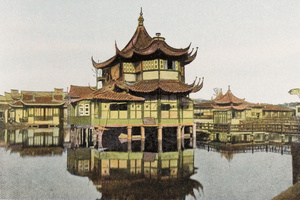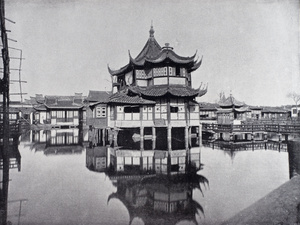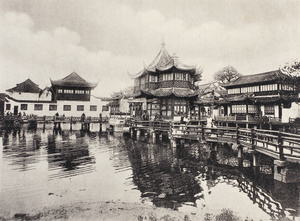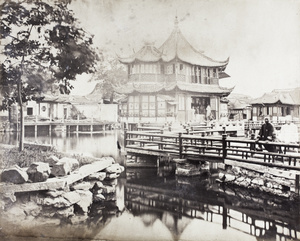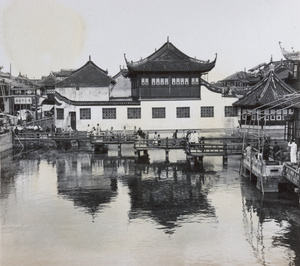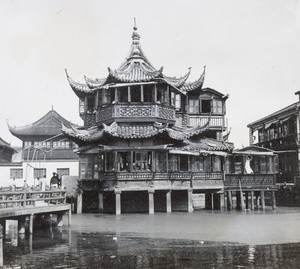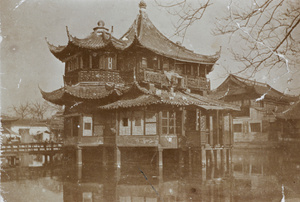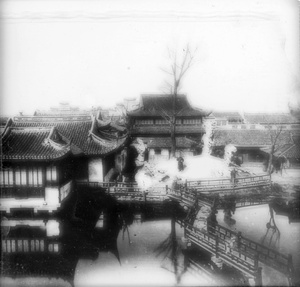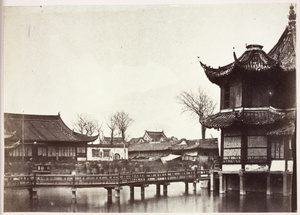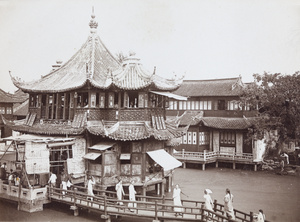Huxinting 'The Willow Pattern Tea House', Shanghai
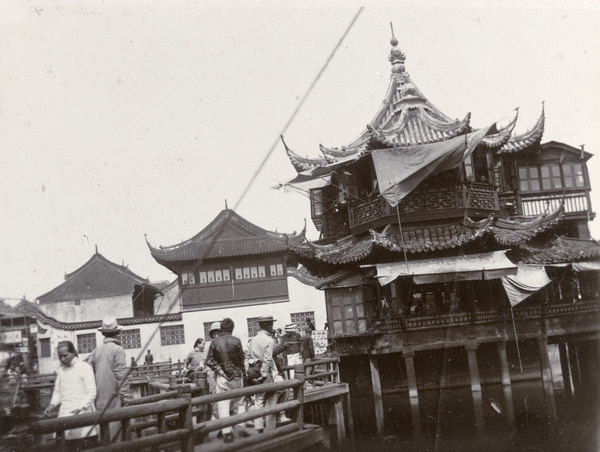
Collection
Identifier
HR01-107
Copyright
© Henry Rue
Notes
University of Bristol – Historical Photographs of China reference number: HR01-107. Huxinting or Woo Sing Ding (湖心亭), Old City, Shanghai. This tea house, dubbed 'The Willow Pattern Tea House' by foreigners due to its resemblance to a favourite English crockery design, is approached by a zigzag bridge (The Nine Curve Bridge). Huxinting may have been one of the inspirations for part of the imaginary scene depicted on willow-pattern crockery. This popular crockery design was developed by Thomas Turner in Shropshire, England in 1780. "South China is evidently the home of the story of the willow pattern which used to be so commonly painted on English china, for here the children's clothes, pinafores and ribbons are all embroidered with silk in this pattern." (Source: Kate Pruen 'The Provinces of Western China', 1906). See also Bk02-03, Bk03-04, Bk05-01, BL-s088, OH01-048, OH01-049, Pe01-048, RA-m010, VH02-133, VH02-144 and Wr-s100.
Caption in album or on mount
TEA HOUSE, NATIVE CITY. SHANGHAI
Location
Estimated Date
1910-1913
Material
Paper
Media
Black and white photograph
Repository
Archives & Special Collections, SOAS Library, University of London


